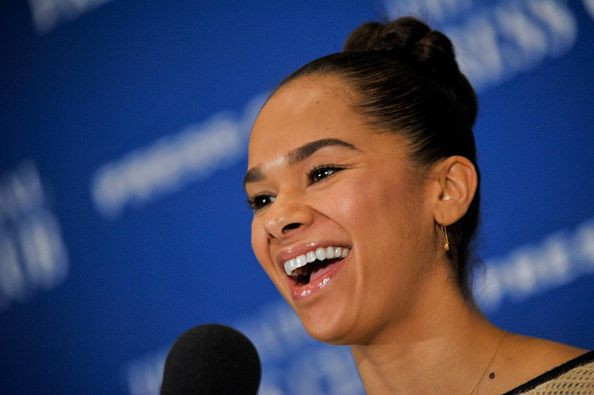Misty Copeland Becomes First African-American Woman Principal Dancer For The American Ballet Theatre

Misty Copeland has just pirouetted her way into history, becoming the first ever African-American female principal dancer for the American Ballet Theatre, the New York Times reported Tuesday. Copeland, 32, has danced with the company for 14 years, spending nearly eight of those years as a soloist. In June, Copeland broke down color barriers when she made her New York debut in “Swan Lake,” performing at a sold-out show at the Metropolitan Opera House.
The ballerina has been vocal about her goal of becoming the first African-American female principal dancer in the American Ballet Theatre. “My fears are that it could be another two decades before another black woman is in the position that I hold with an elite ballet company,” she wrote in her memoir, “Life in Motion: An Unlikely Ballerina,” published last year, according to the Times. “That if I don’t rise to principal, people will feel I have failed them.”
Even in 2015, there is still a lack of racial diversity in elite ballet companies. “People still have not embraced the notion of diversity within this art form because it’s always been seen as an exclusive art form,” Virginia Johnson, the artistic director of Dance Theatre of Harlem, told Pointe Magazine in 2014. “It’s not only been exclusive of people of color — it’s been very class-oriented.” Part of the mission statement of the Dance Theatre of Harlem is “to present a ballet company of African-American and other racially diverse artists who perform the most demanding repertory at the highest level of quality.” Pointe Magazine describes the dance company as “carrying the torch for racial inclusion for 45 years.”
Misty Copeland just made history: She's the American Ballet Theater's first black principal. http://t.co/4e4PWMuy0Y pic.twitter.com/phOlxGwkYI
- Mashable (@mashable) June 30, 2015Rachel Moore, the chief executive officer of the American Ballet Theatre, who recently announced she was leaving to become president and chief executive officer of the Music Center in Los Angeles, told Pointe in 2014, “I’ve heard from the mouths of dance professionals that black dancers categorically cannot become ballet dancers because they don’t have the right body,” said Moore. “I think that is an incredibly unfortunate myth that still exists.”
In 2013, Moore established Project Plié, which is described as a “comprehensive initiative to increase racial and ethnic representation in ballet and diversify America’s ballet companies. Project Plié seeks to combine training and support of ballet students from communities previously underrepresented in American ballet companies with the creation of a nationwide network of partner professional ballet companies who are committed to diversity.”
While progress is being made, racial diversity was still a major issue in elite dance companies. Before Copeland, the New York City Ballet had only two other African-American principal dancers: Arthur Mitchell and Albert Evans, both men, according to the New York Times. American Ballet Theatre officials said the only other African-American principal dancer before Copeland was Desmond Richardson, also a man, in 1997.
Copeland, though, has been paving the way for minority dancers. She was on the cover of Time magazine's "Pioneers" issue this year, has more than half a million Instagram followers (according to the New York Times), and was the star of an Under Armour ad that has been viewed more than 8 million times. Twitter was overflowing with support for Copeland’s latest achievement.
History is beautiful. Congrats @Mistyonpointe, on being named American Ballet Theatre Principal. #IWILLWHATIWANT pic.twitter.com/PnxDM4BDEo
- Under Armour Women (@UAWomen) June 30, 2015.@mistyonpointe, you are a complete and total inspiration. This is a huge day for women breaking barriers, for Black women, and for ballet.
- JessMoRo (@JessLivMo) June 30, 2015© Copyright IBTimes 2024. All rights reserved.






















